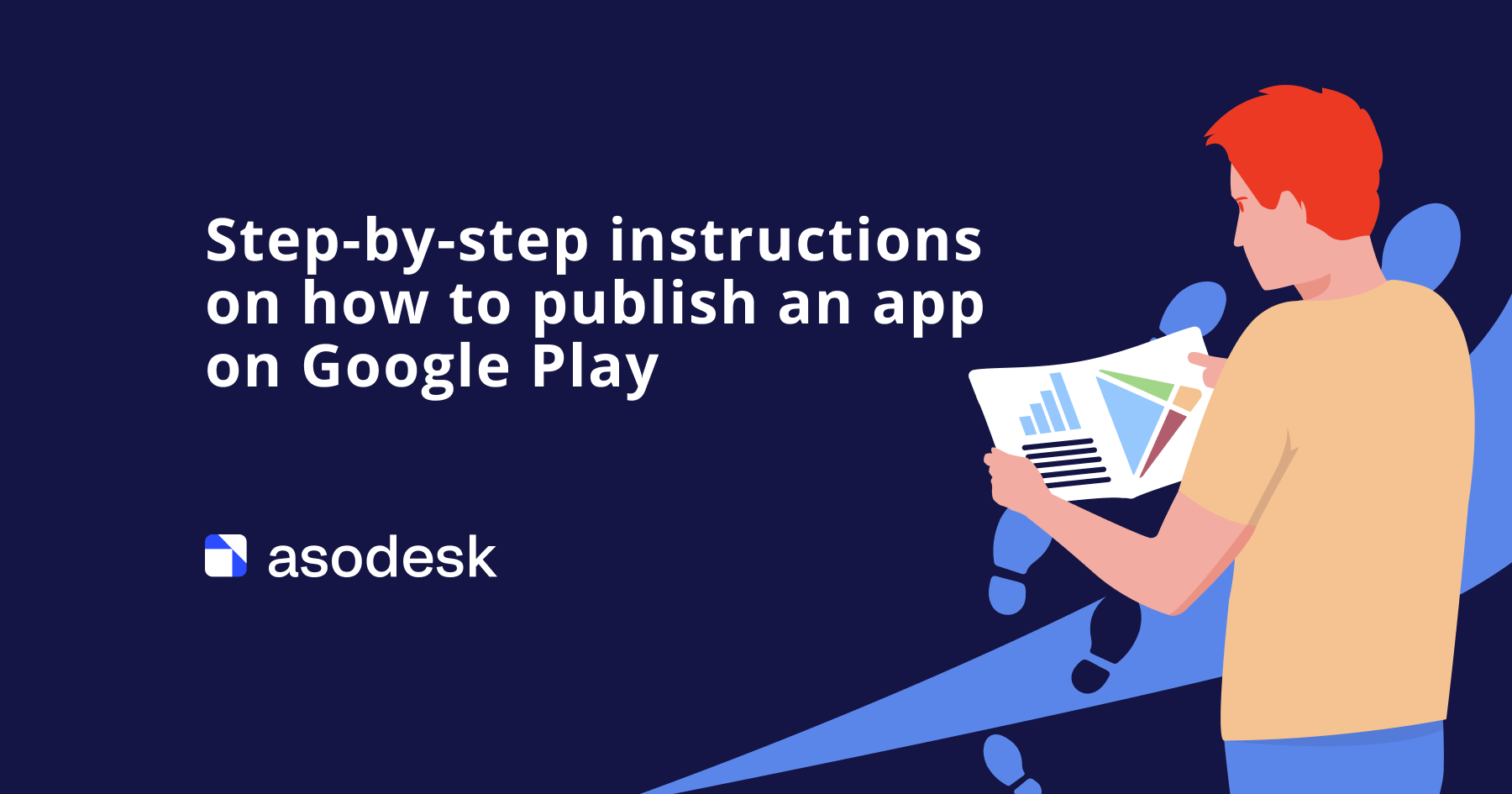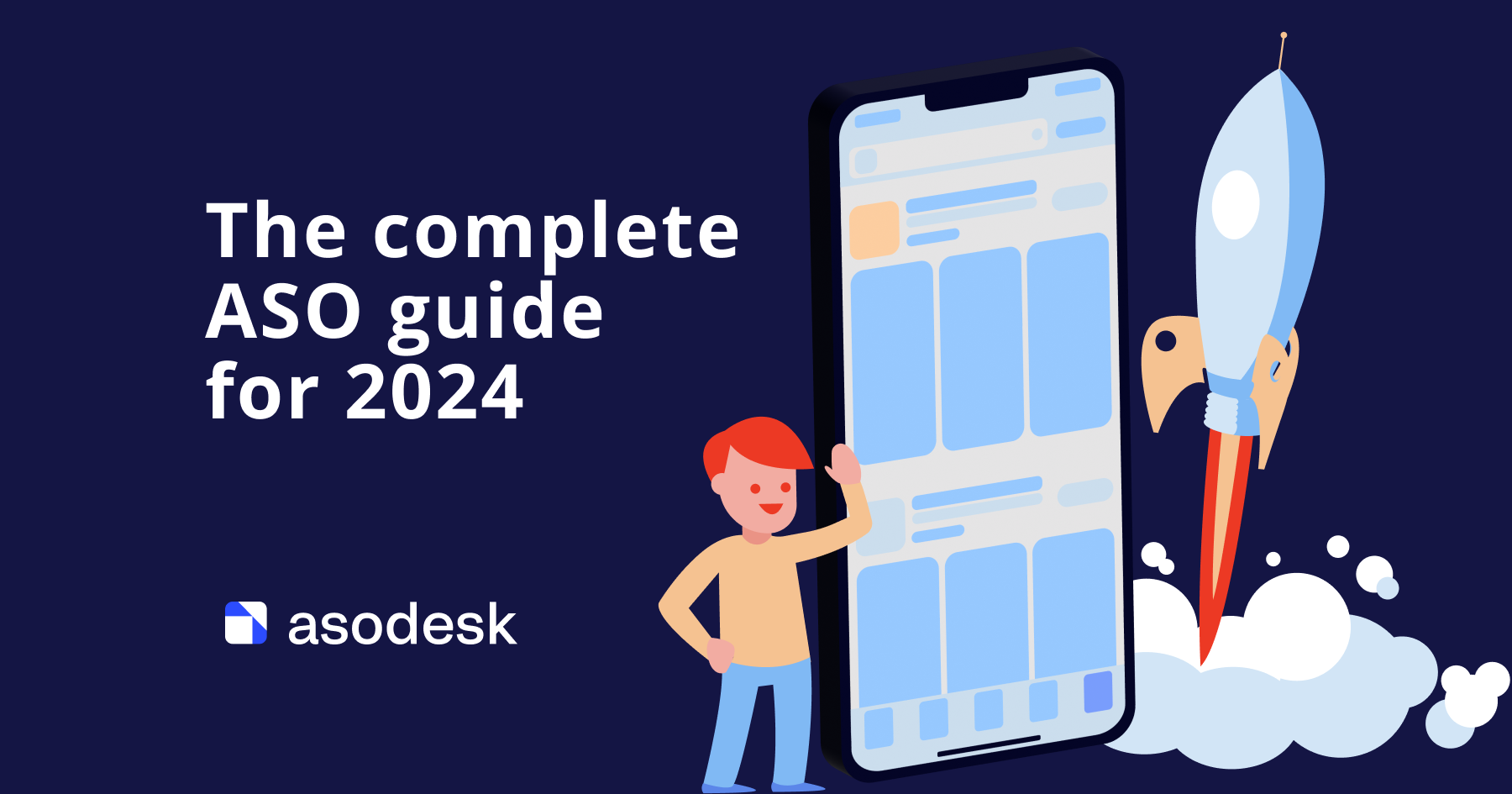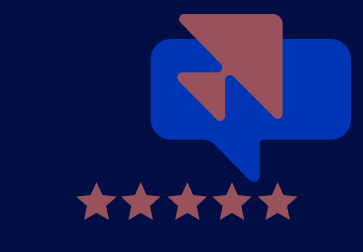How competitive analysis helps in App Store Optimization
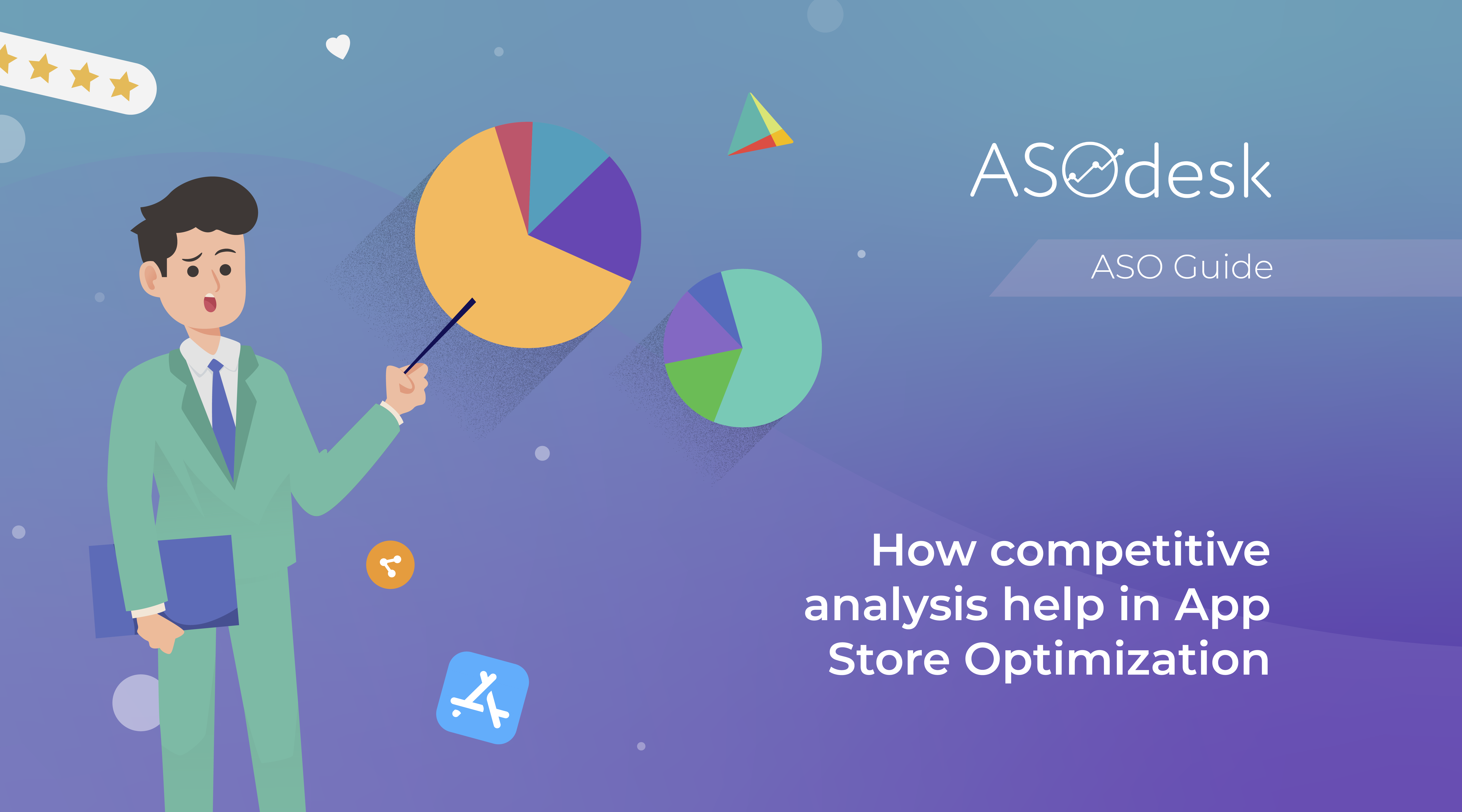
Competitive analysis is necessary at every stage of App Store Optimization: it helps to collect the semantic core, find growth points for the application, and assess the effectiveness of ASO.
In this article, Artem Tkachuk, Onde.app ASO manager and ASOdesk ASO expert, explained how to analyze competitors in ASO. This is a series of articles based on the ASOdesk Academy lecture materials, where we covered all aspects of App Store Optimization. We have already noted who needs optimization and why, how to work with iterations in ASO, and what is important to consider when optimizing an application for foreign languages. You can watch the original lecture here:
Why analyze competitors in ASO
Competitive analysis will help to:
- Build a semantic core. You need to understand for which keywords the positions of competitors are rising or falling. For example, during analysis, you add the keyword “interval training”, for which the competitor’s positions rise.
- Get ideas for visual optimization. Changing screenshots and icons can increase the install conversion rate. For example, after a competitive analysis, Anna Benkis changed the icons and names of her Know & Go app. This helped to increase the installation conversion rate by 32%. Read more in this case study.
- Find growth hypotheses and application problems. During analysis, you will see users’ preferences. For example, users write in reviews that they like the calorie counting feature of the fitness app. You can use this idea and add a calorie calculator to your app too.
- Correctly assess the positions of competitors and build a plan for further actions. The search position of an application is strongly influenced by the activity of its competitors. Sometimes the rankings go down even if you haven’t iterated and the app’s rating hasn’t dropped. This situation may be related to the activity of competitors. Regular analysis will allow you to react in time to the growth of competitors in search results. You can spot good points in competitors’ ASO strategies and adapt them to your application.
- Detach from similar apps. During the analysis, you will understand how to stand out among your competitors. For example, we analyzed meditation apps and found that most competitors use blue icons. So we changed the icon to stand out in the search results. We chose green, which matches the style of the application.
How to choose competitors for analysis
The main goal of competitive analysis is to get insights that will become a list of hypotheses. Therefore, it is important to analyze only those competitors from whom you take as many hypotheses and ideas for development as possible.
It is difficult to find new ideas for a well-known brand. Brands, as a rule, are not engaged in App Store Optimization — they are already in the top results for brand queries. Brands don’t have targets for conversion optimization.
Therefore, it is better to analyze competitors who are not strong brands, but are constantly engaged in ASO. Let’s compare two apps: Nike versus a midsize competitor that is in the top 10 for “fitness” in the US.
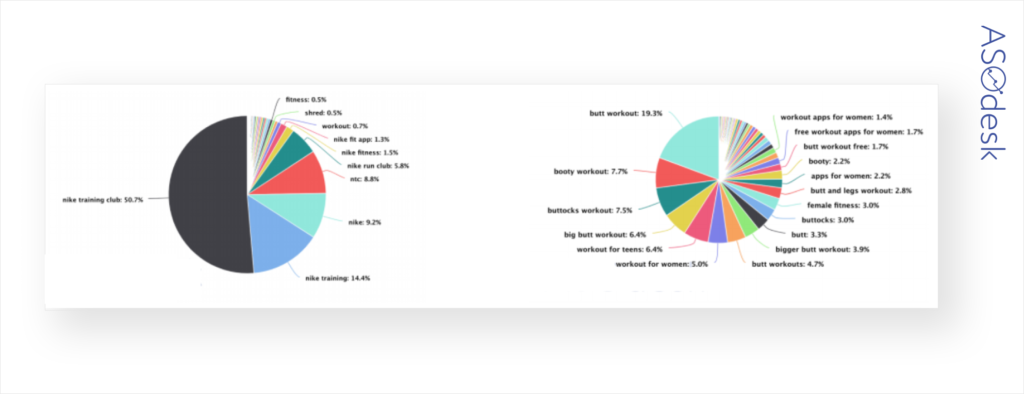
Analysis of search queries of branded and non-branded applications
We obtained much less information from Nike. 73.7% of traffic to the application on the left comes from brand queries. And the app on the right gave more than 16 search query ideas.
How to search for competitors
Follow the dynamics of competitors in the top results, search by charts or most frequent queries.

The charts contain applications that have long been in the top results. But it is important to check out competitors who have recently entered the market. Therefore, analyze competitors for the queries entered by a user. Automatic tools will help you. For example, by using Keyword Explorer in ASOdesk, you will find competitors’ applications for a specific request. Up to nine applications can be added and analyzed.
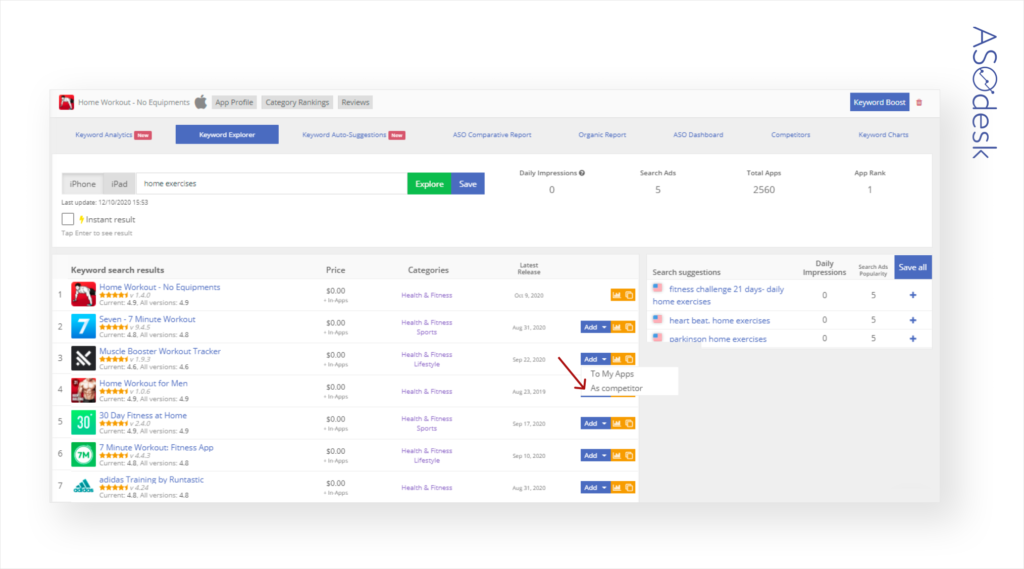
How to analyze competitors at different stages of App Store Optimization
Collecting the semantic core: query ideas
At any stage of search engine optimization, we develop growth hypotheses, or hypotheses that solve application problems. Competitive analysis provides certain ideas at all stages of the ASO.
Competitive analysis will help you find as many relevant queries as possible. We analyzed four apps that are in the top 10 for fitness in the USA.
On the chart, you can see requests that are no lower than the ninth position. In the Organic Report tab, you can see the search queries of competitors. The tool finds up to 1000 search queries for each application, most of which will be relevant.
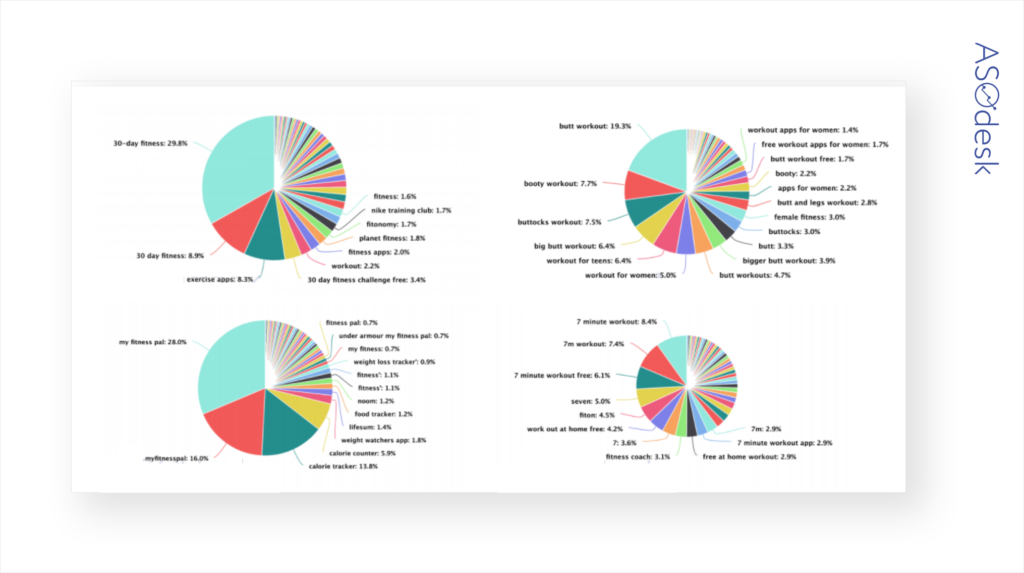
Preparing metadata: ideas for a title and description
At this stage, you will look at the metadata that competitors are using. You will find out what moderation is letting or not letting by. For example, we are making a sticker application for WhatsApp. We don’t know if the WhatsApp brand can be used in the title. To test this, let’s take a look at competitors who are releasing similar apps. It’s important to understand if their apps were missed by the moderators.
If we see that several versions in a row include the word “WhatsApp”, then we will add the messenger brand to the name as well.
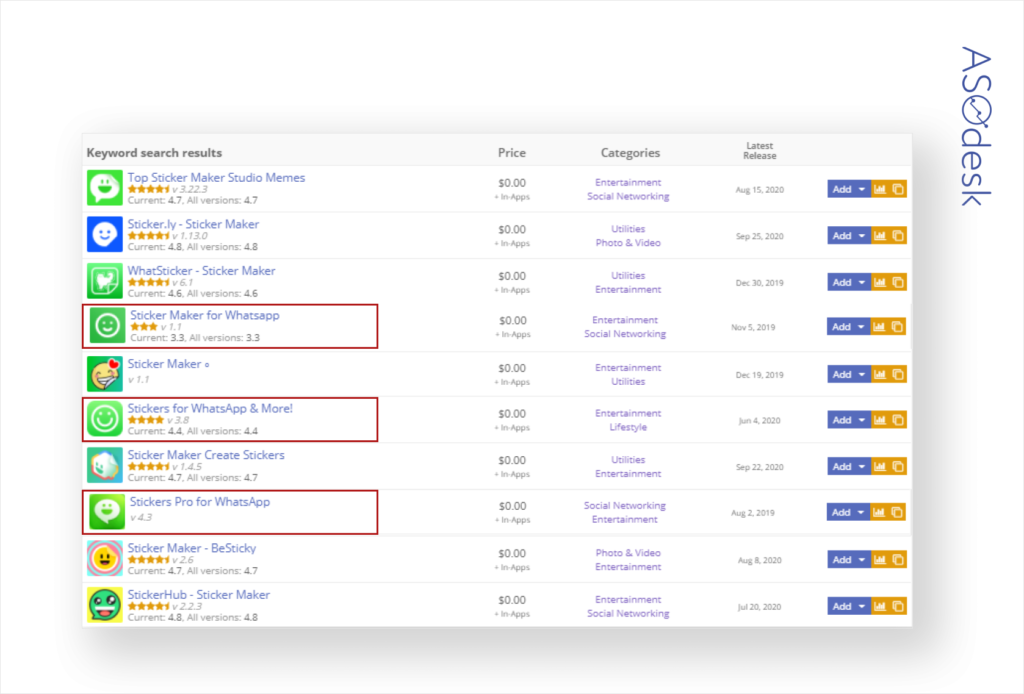
Performance measurement: how the activity of competitors influenced the position of an application
Sometimes the app’s positions in the search and the number of installations drop. If you haven’t made any changes and the app’s rating remains the same, then the problem may be in the competitors.
For example, the app on the left drops for fitness-related queries. The app on the right increases for such requests. It has been recently optimized because there are many queries marked “new”. Now we will take ideas from the competitor and adapt them to our application.

Working with iterations: choosing semantic cohorts
Competitive analysis will help us select semantic cohorts and keywords for which we will get the best positions. We find keywords that are suitable for our application, by which competitors are indexed. You can use ASO Comparative Report for this. First, we choose one of nine competitors.
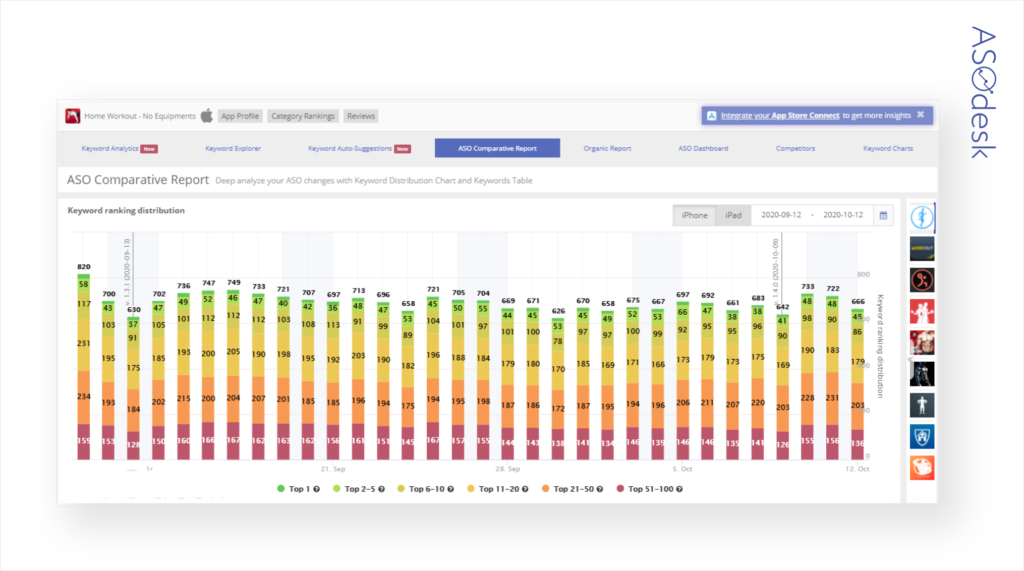
We look at the queries by which competitors are rising and add them to the semantic core.
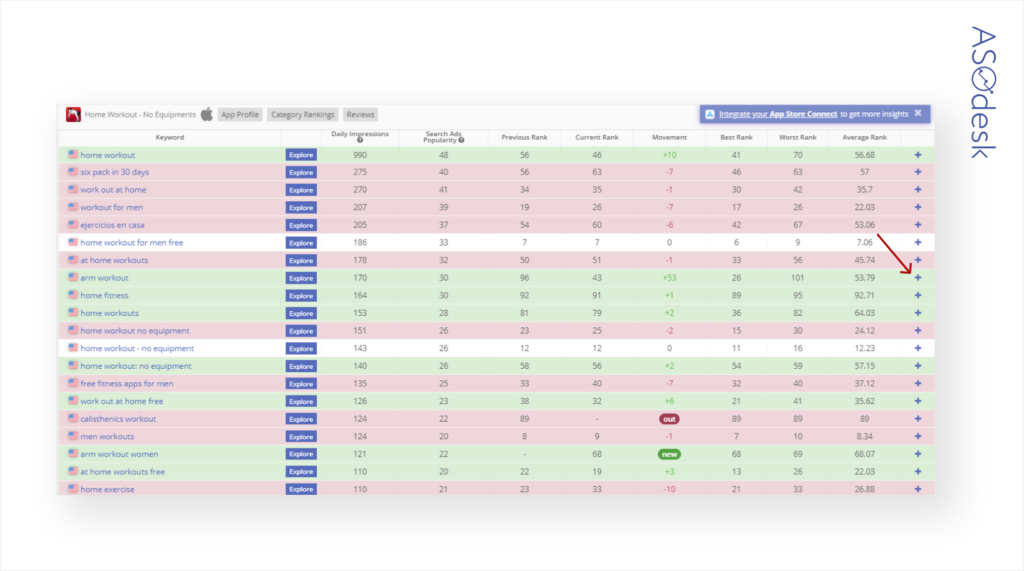
You can also use the Missing Competitors Keywords tool in ASOdesk. This will find and add those queries for which competitors have reached the top. The tool also shows the number of users searching for the app using a specific keyword per day (Daily Impressions).

Text Analyzer highlights the keywords that competitors add to the description.

We split the keywords into separate semantic cohorts, for example, we distinguish the following groups of queries: “weight loss”, “diet”, “buttocks”, “abs”, “arms”, “healthy lifestyle”. During the analysis, we notice that competitors are growing in terms of requests related to weight loss.
Then we study the competitors’ queries deeper, add more queries on this topic to the semantic core, and write keywords related to weight loss in the description.

Growth hypothesis: express competitive audit to obtain ideas
An express audit of your competitor will not be very different from an audit of your own application. We analyze:
1. Competitors’ icons. It is important that the icon looks impressive among the competitors, and at the same time responds to trends.
For quick icon analysis, use the Keyword Charts tab in ASOdesk.
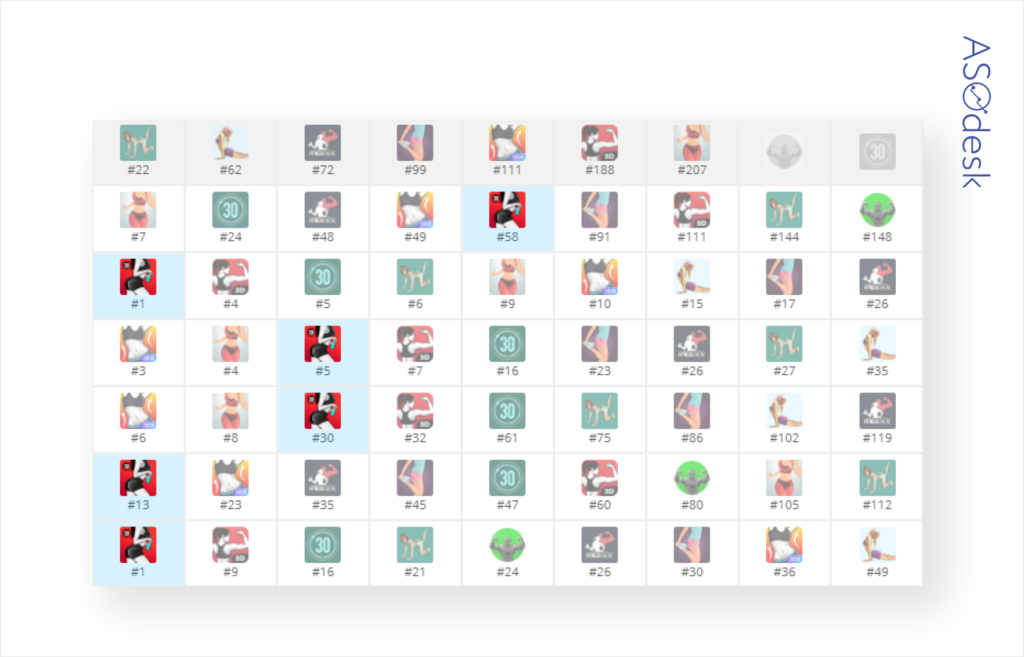
In the process of analysis, we will see that most fitness apps use toned muscles and body parts in their icons. These icons highlight the results a user will achieve after training. We can test this on our application.
2. Screenshots. With screenshots, it is important to emphasize the advantages, and speak about the useful functions of the application.
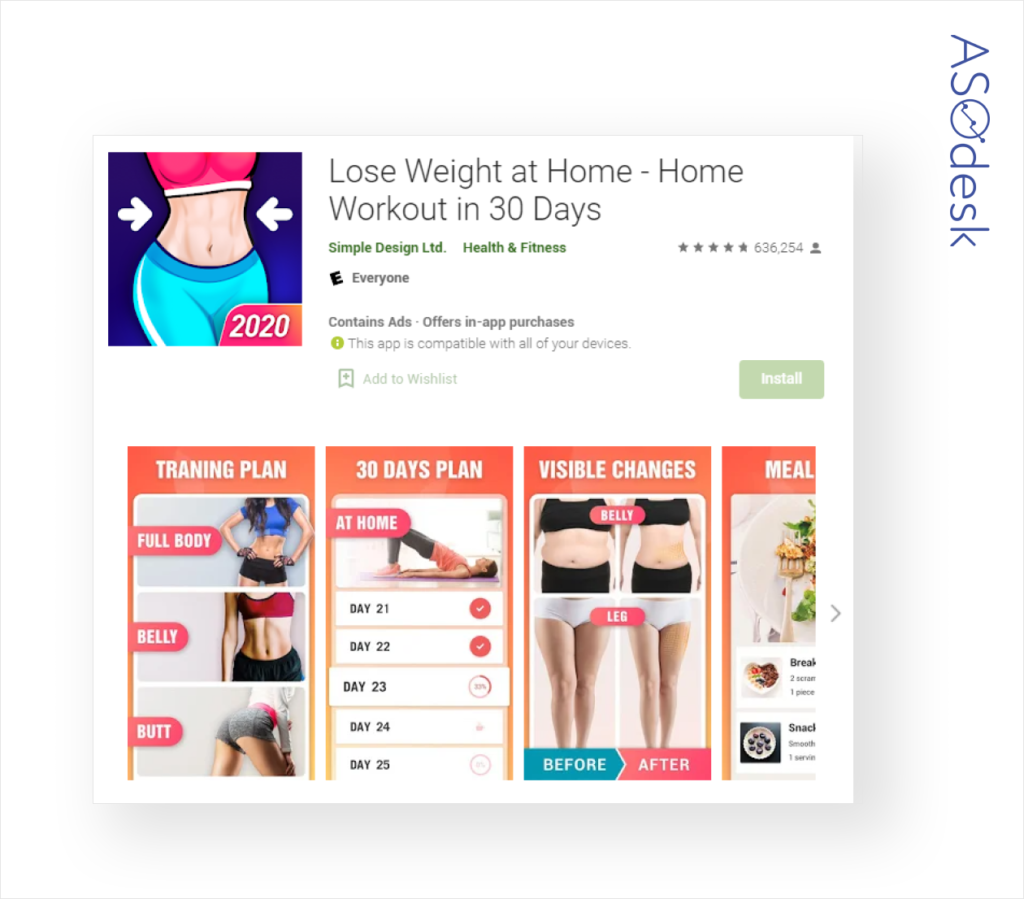
In the process of analysis, note the mistakes that competitors make. For example, it will be difficult for a user to read small text on the application page.

3. Metadata of competitors: title, subtitle, short and detailed description of the application.
We analyze what keywords competitors use in the title and description. We have already discussed this in more detail in the “Working with iterations” and “Preparing metadata” sections.
We consider each element from the point of view of two or more optimization tasks, such as: maximizing installations and maximizing install conversion. For example, to maximize installations, add as many keywords as possible to the title and description.
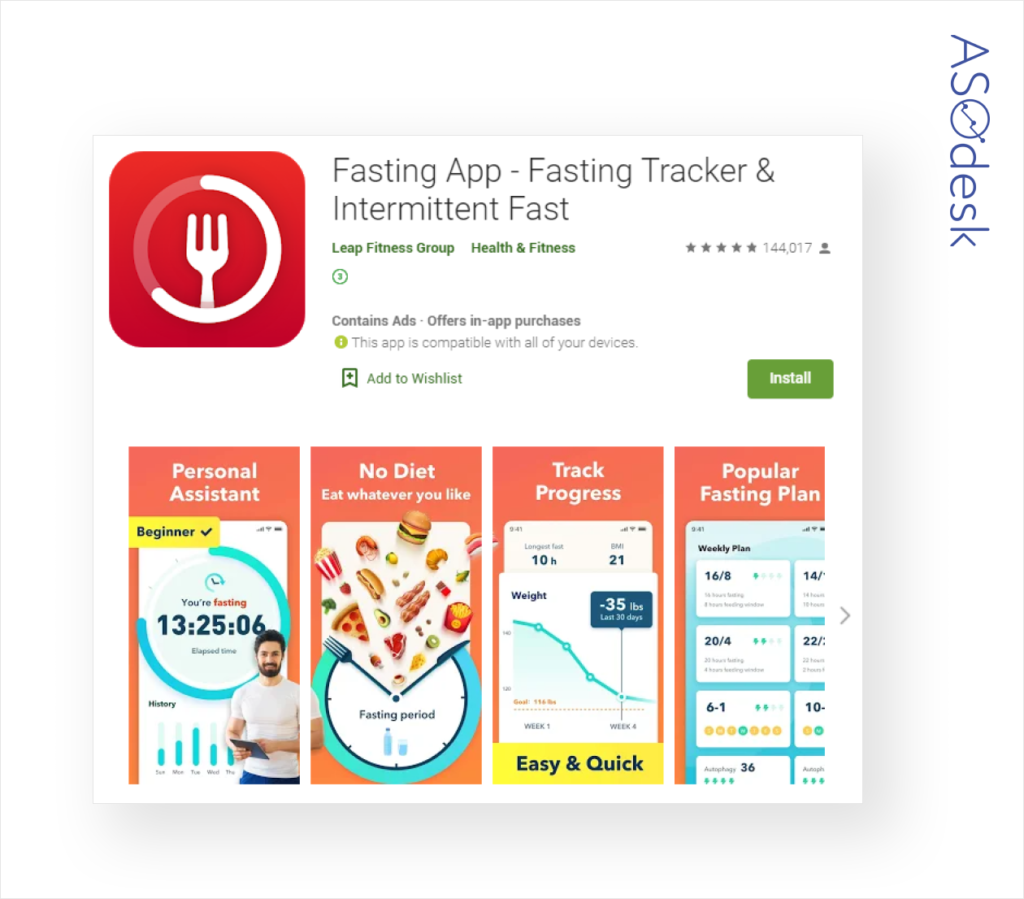
To maximize install conversions, it is important that the title, description, and screenshots are relevant to the user’s request. When visiting the application page, the user must make sure that the application will fulfill their requirements.

4. Strategy for working with reviews. When analyzing competitors, you can get a number of insights:
- Where to place a call for feedback.
- How to use motivated traffic correctly.
- How to add keywords to the review and how much it affects the app indexing.
- What users of similar apps like or dislike. For example, users are missing the “Exercise routines”.

Conclusions
- Competitive analysis helps to: collect a semantic core, get ideas for graphical optimization, find growth hypotheses and application problems, and stand out among competitors.
- The main goal of competitive analysis is to get as many insights as possible. Therefore, choose only those competitors who regularly engage in ASO. More insights will come from analyzing non-branded but active apps.
- When looking for competitors, do not rely only on charts — they contain top applications that have entered the market a long time ago. To find new competitors, search for the apps using user requests.
- Analyze competitors throughout the entire ASO cycle. At the stage of collecting the semantic core, competitors will provide ideas for keywords. As you prepare the metadata, you will get ideas for a title and description. In the process of performance measurement, you will see how the activity of competitors has affected your positions. When working with iterations, analyze semantic cohorts of similar applications. An express audit of competitors will help you build hypotheses of application growth.

